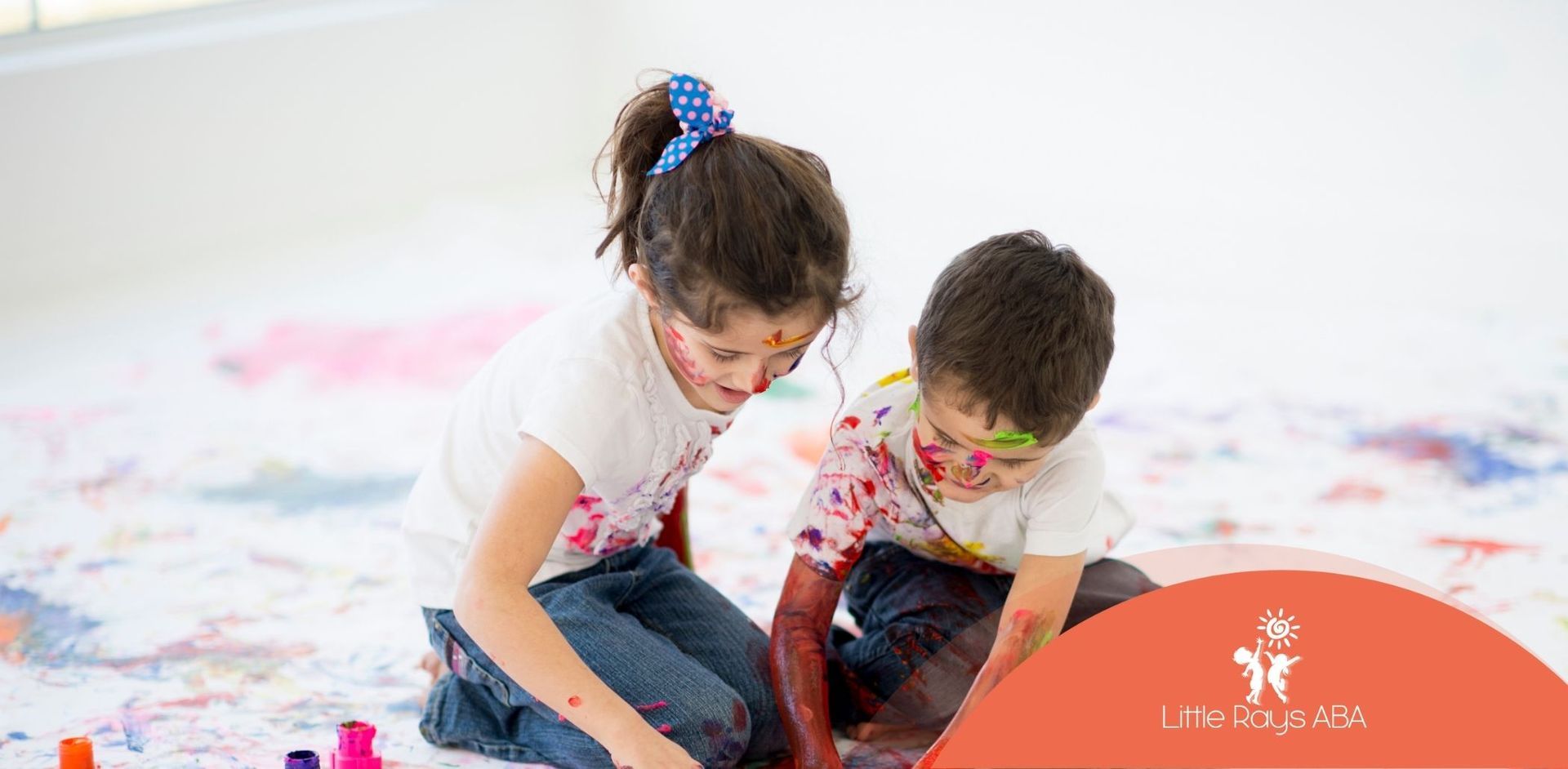
Get Started with the Two Teaching Methods of ABA
Applied Behavior Analysis (ABA) therapy is a well-known method that helps us understand and improve how people act in different places. This is mostly used for those with autism spectrum disorder or other developmental delays. By applying the ideas from behavior analysis, ABA therapy creates learning opportunities that help build positive behaviors and reduce harmful ones.
A key part of ABA therapy is the teaching strategies it uses. Discrete Trial Training and Natural Environment Teaching are two big teaching strategies here. Discrete Trial Training focuses on structured learning, while Natural Environment Teaching helps people learn skills in their everyday life. These methods together make skill acquisition better and fit into various settings. Let’s take a closer look at both of these important ways ABA therapy helps in the natural environment.
Understanding ABA Therapy
ABA therapy is built on knowing how behaviours happen, how the environment can change them, and how people learn. It uses scientific data to make plans that help people learn new things and do better in different places.
At the heart of ABA therapy is behavior analysis. The therapy breaks big tasks into small, manageable steps, so skill acquisition becomes easier. It uses positive reinforcement to help people do the things you want and support real changes. With these plans, you can often find solutions in education and therapy that fit each person’s needs.
Definition and Principles of ABA
Applied Behavior Analysis, or ABA, studies how people act and how the world around them changes these actions. ABA therapy uses what we know about behavior patterns to help shape and improve target behaviors. To do this, behavior analysts watch people, break down what they do into steps, and come up with the best ways to help.
One main idea in ABA is to split up big or hard tasks into smaller, manageable steps. Behavior analysts look closely at each step, find out what happens right before and after a behavior, and then use rewards to help people grow. This science-based way helps make sure people can see real progress and get better results.
Behavior analysis always puts each person first. Every plan is different, using teaching types like discrete trial teaching and natural environment teaching to meet each person’s needs. The bigger aim is to help people show more appropriate behavior, talk better, and have better quality of life by working on the things that matter most to them.
Importance of Specific Teaching Methods in ABA
Teaching strategies in ABA therapy are important for good learning and helping with changes in behavior. Some aba strategies, like discrete trial training (DTT) and natural environment teaching (NET), are made for each person. They help with skill acquisition by using step-by-step ways that fit one’s needs.
Discrete trial training is about breaking tasks into smaller steps. It uses clear prompts and quick rewards to help learners. This teaching method works well in a simple, controlled learning environment. It helps people build basic skills that are needed early in learning.
Natural environment approaches, like NET, use what a person likes and put teaching in natural environment settings. It happens during daily routines and gives real learning opportunities that can feel more meaningful. NET also helps make sure skills work in many places, which helps with generalization of skills and makes learning stick.
These aba strategies can change to fit different people and are backed by research. They make a supportive learning environment that is shaped around what each person needs.
Core Teaching Methods in ABA
Two main teaching methods in applied behavior analysis (ABA) are Discrete Trial Training (DTT) and Natural Environment Teaching (NET). DTT uses a very organized and planned way to help with skill acquisition. It focuses on teaching step by step, often at a table or in another structured space. On the other hand, NET helps people learn in a natural environment by using parts of daily life. This method lets people learn skills in places and situations they know well, usually through normal, real-life interactions.
These teaching methods work well together. DTT is good for learning new things in a very set way, while NET helps people use what they have learned in day-to-day life. Using both DTT and NET gives behavior analysts the tools to meet many different needs for skill learning. This mix helps address many developmental goals and makes sure those skills stick over time. You can read about how both methods work and what they offer below.
Overview of Discrete Trial Training (DTT)
Discrete Trial Training (DTT) is a way to teach used in applied behavior analysis (ABA) therapy. DTT works by breaking down complex skills into smaller, manageable steps. With this method, there are clear prompts and direct instruction. Each skill is taught in a set order, one at a time, with a lot of practice. Positive reinforcement helps encourage the behaviors that are wanted. DTT helps children with autism spectrum disorder learn new communication and social skills. This teaching style creates a good learning environment for early intervention. It supports growth in academic skills by making skill acquisition easier for children who need help to learn in steps.
Insights into Natural Environment Teaching (NET)
Natural Environment Teaching (NET) is a key part of applied behavior analysis. In this approach, the focus is to use real-world learning opportunities in the natural environment. NET lets young children with autism spectrum disorder practice academic skills and take part in social interactions as part of their normal day. It uses natural reinforcers and pays close attention to the specific needs of each child.
With natural environment teaching, ABA therapists set up places where kids can learn skills that help them move through daily routines. They choose targeted interventions that help children grow positive behaviors and adjust to new situations. This way, children on the autism spectrum can use what they learn in other places, not just one setting. This practice gives them skills they will use every day. In the end, it supports their overall quality of life.
Advantages of DTT and NET in ABA
Both Discrete Trial Training (DTT) and Natural Environment Teaching (NET) offer big benefits to ABA therapy. DTT uses a clear, step-by-step way of teaching, so it helps the learner pick up special skills. This helps them feel sure of their progress and keeps it easy to track. NET, on the other hand, adds learning opportunities into natural settings. This helps skills grow in the real world and helps with better social and meaningful talks.
When you use both DTT and NET in aba therapy, you can change teaching strategies to fit each child. This way, every child gets the support they need. It helps them get new academic skills, build social ties, and get ready to handle different environments in their everyday and natural environment.
How DTT Enhances Structured Learning
Discrete Trial Training (DTT) plays a big part in giving a clear plan to learn in aba therapy. It works by using clear prompts, fast rewards, and a steady set of steps. This helps a person learn good behaviors in a simple way.
When you use DTT, the work is done in small steps over and over again. This helps learners focus on single skills and get better over time. For example, in learning how to talk, a student may keep naming things. They use words with help and earn a reward for the right answers. Because this way is always the same, it works well for early intervention.
An important part of DTT in aba therapy is that it tracks behavior carefully. By looking at each trial and what happened, behavior analysts can see quickly if it is working or not. They can know what the child needs to work on more. In the end, DTT sets up a place where children can learn and grow stronger. This idea of skill acquisition and good reinforcement makes Discrete Trial Training an important choice in early intervention.
Benefits of NET in Real-Life Application
Natural Environment Teaching (NET) is a good way to help kids learn because it uses real-life moments and talks with others. This way, children get to learn and use skills in different places. It helps them be more flexible and talk better with others.
For example, when a parent and child play together at home, NET may involve teaching the child how to share using toys they know well. This helps the child pay more attention and lets them use what they learn in their daily routines. NET adds naturalistic teaching to these moments. By doing this, learning feels smooth and easy, not forced.
With NET, kids get the chance to build skills in real situations. It gives them, and other people, more ways to talk and play together. The fun and hands-on approach keeps them interested. It also helps kids use what they learn with different people, at various settings, and in daily routines. NET puts teaching right into real, daily life, and that makes aba therapy more useful. This way, kids get learning opportunities that feel real and fit their everyday world.
Practical Implementation of ABA Methods
Applying aba methods like discrete trial training and natural environment teaching works best when you adjust them to fit each person. Therapists and teachers use these strategies to help kids learn skills they need for school and life.
By mixing the structure of discrete trial training with the more relaxed and fun style of natural environment teaching, the professional team creates a good learning space where positive behaviors can grow. No matter where you are—the classroom, home, or a therapy session—using aba methods in a practical way lets the support match what the child needs, so there is more growth and good results.
Customizing Teaching Methods to Fit Individual Needs
Making ABA teaching methods match specific needs is key to getting good results. Discrete Trial Training (DTT) is all about working on skills step-by-step in a set way. It helps those who need support to learn new and basic ideas one at a time. On the other hand, Natural Environment Teaching (NET) is great for grabbing a child’s interest. It makes sure skills can be used in many places, not just the classroom.
When you customize these ways of teaching, you have to look at the child’s behavior, set some goals, and pick the best ways to help the child meet these goals. For example, if a child has a hard time with talking, NET can help using play in a natural environment. DTT can be used for school tasks that need careful practice and repeating.
When teachers and therapists mix these strategies, they can deal with the unique needs of every child. This helps each one grow in a way that matters while cutting down on challenging behaviors.
Examples of Successful ABA Implementation in Educational Settings
Successful ABA use in schools shows how tools like DTT and NET can help make learning better. When a teacher uses DTT, they teach skills like math by splitting the lesson into smaller steps. The teacher gives support often and checks how each student is doing in a set way.
NET also helps a lot, but it works best in more relaxed places. In preschool, teachers use games for skill acquisition. They help kids talk and work with each other. During guided play, kids can learn social skills such as how to take turns or share.
Behavior analysts help teachers find the ABA strategies that fit each student best. These ways promote positive behaviors and give students skills to manage school and social life. This makes a nice place where all can grow and learn.
Addressing Challenges in ABA Teaching
Even though ABA teaching methods work well, there can still be some problems, especially when you use Discrete Trial Training (DTT) or Natural Environment Teaching (NET). Some of these problems are keeping students interested and meeting their different behaviors and needs.
Good solutions for these issues are to change ABA strategies so they fit each student’s wants and needs. It also helps to work together with parents and teachers. You should keep looking at what is happening and fix any problems that show up. By staying active and working as a team, you can use ABA principles better and help students do well. This way, you make sure students learn in the natural environment, in DTT, and in other ways.
Common Obstacles with DTT and NET
Every way of teaching has its own problems, and this is true for DTT and NET as well. A set way to teach, like DTT, might make some kids lose interest. This can happen, especially with children who like more lively or hands-on ways to learn. The fact that DTT repeats things a lot can help, but some kids find it hard to stay focused for a long time.
NET, on the other hand, is all about natural talks and play. Because of this, you may not have as many things you can count or note down as you might get from more set teaching styles. Also, NET needs teachers to change how they work a lot, because it depends on what the child wants that day or in that moment.
To deal with these usual problems, behavior analysts and others need to be aware and ready to change their way. They might have to switch methods or add new ones so they can help each child. They have to keep finding the best way to work for every kid, no matter what comes up.
Effective Strategies for Overcoming These Challenges
To deal with problems in using DTT and NET, it is important to use targeted ways and good ABA strategies. If a child gets bored during DTT, giving rewards can help get back their interest. You can also switch up the kinds of tasks to keep them paying attention.
When using NET, plan lessons around what the child likes. This helps keep them interested so that learning happens more often. Teachers should also set goals that the child can reach and keep track of how things are going in their daily routines.
It is good for teachers and behavior analysts to work together in the classroom. This way, they can change teaching strategies when tough behaviors show up. These choices help make the use of DTT and NET smoother and give children learning that matters.
Conclusion
To sum up, it is important to know the two main ways of teaching with ABA: Discrete Trial Training (DTT) and Natural Environment Teaching (NET). These two teaching styles have their own benefits. DTT and NET help with different learning needs, so each child gets a well-rounded experience. By picking the right method for your situation, you can make learning in the natural environment better and more helpful. Caregivers and teachers can give support that fits anyone’s needs by using discrete trial training or natural environment teaching. If you want to use ABA for your child or in your work, remember that choosing the right way can bring real change. If you have any questions or want help, get in touch with us. We are here to help you with your journey in ABA. At Little Rays ABA, we specialize in tailoring these techniques to suit each child’s individual needs, ensuring the most effective approach for their success. If you’re ready to embark on a journey of meaningful progress, contact us today and let us guide you through the transformative power of ABA therapy.
Frequently Asked Questions
What Makes DTT and NET Preferred Methods in ABA?
DTT and NET are well-liked ways to teach in ABA therapy. They are used a lot because they work well and can help with many needs. Discrete trial training lets people learn in a very set way. This is good for teaching basic skills. Natural environment teaching helps people learn when they are in a natural environment. It also gives more learning opportunities through things people do every day. This can help keep people motivated, helps skills work in new places, and makes social interaction better. Both ways play a big part in helping you or your loved one learn in different natural settings.
How can I determine which ABA teaching method is best suited for my child's needs?
To find the best ABA teaching method for your child, look at how they learn, what they can do, and what they like. See how your child gets on with each way of teaching. Talk with people who know this field. They can give advice that fits your child’s specific needs.
What are the two primary teaching methods used in Applied Behavior Analysis (ABA)?
The two main ways people teach in applied behavior analysis are Discrete Trial Training (DTT) and Natural Environment Teaching (NET). In DTT, the focus is on teaching someone in a set way with practice and doing the same thing many times. Natural Environment Teaching, or NET, is about helping a person learn new things in natural settings. This way, it is easier for them to use what they know in real life. NET helps with the generalization of skills, as the teaching happens in the natural environment instead of only in a lesson. Both DTT and NET are important parts of behavior analysis.
What are the two main teaching methods used in Applied Behavior Analysis (ABA)?
The two main teaching methods used in Applied Behavior Analysis (ABA) are Discrete Trial Training (DTT) and Natural Language Acquisition (NLA). DTT focuses on breaking skills into small, manageable parts, while NLA emphasizes teaching communication in natural contexts, promoting functional language use. Both methods effectively support skill development.
Sources
- https://www.autismspeaks.org/expert-opinion/what-discrete-trial-training
- https://www.commonwealthautism.org/teaching-outside-of-the-table/
- https://www.behavior-analysis.org/
- https://www.simplypsychology.org/positive-reinforcement.html
- https://pmc.ncbi.nlm.nih.gov/articles/PMC11487924/
- https://raisingchildren.net.au/autism/therapies-guide/discrete-trial-training
Related Posts





